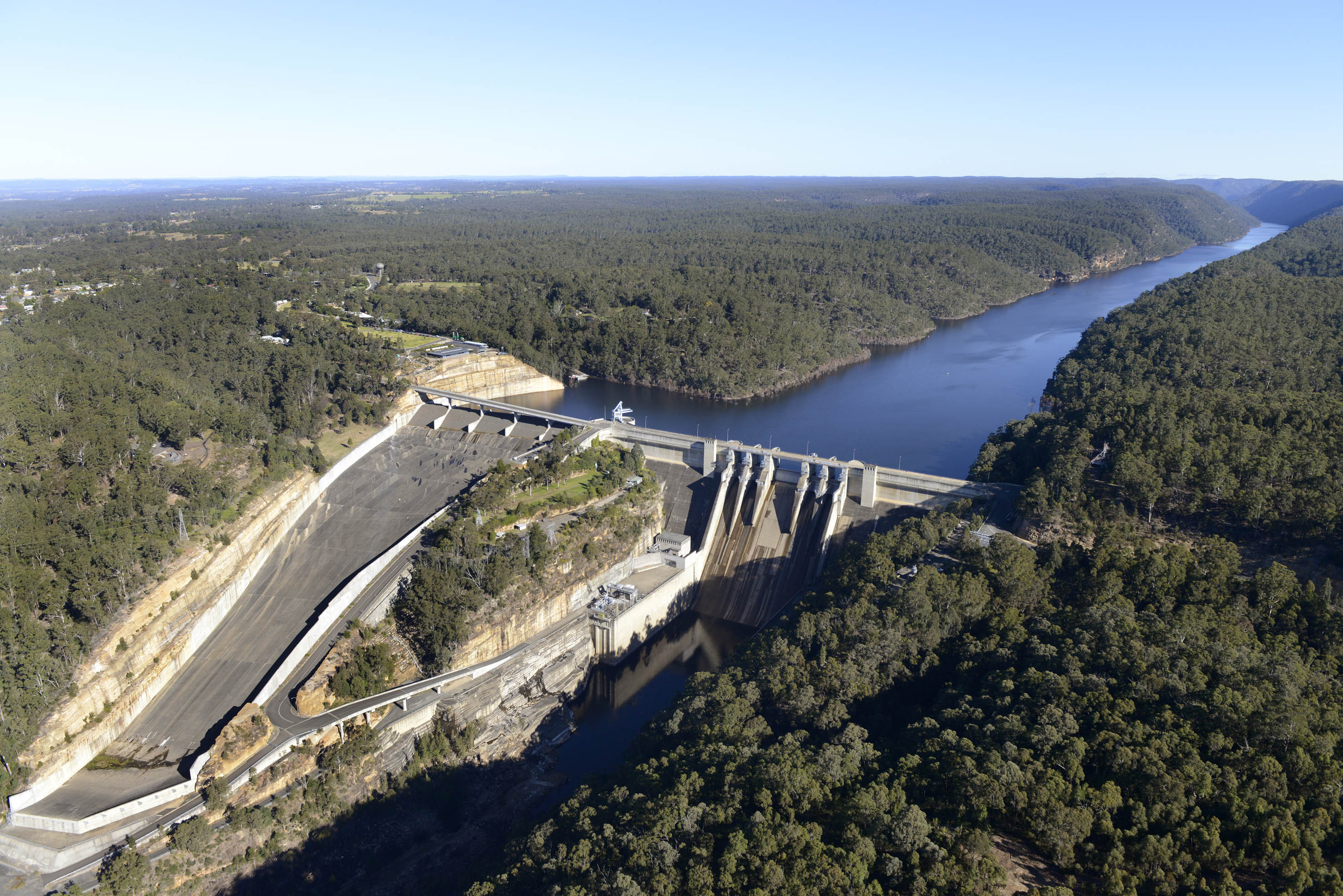Protecting Sydney's water: the resilience of Warragamba Dam against natural disasters
Water. We all need it. Every single day households across NSW use hundreds of litres of water for drinking, cooking, bathing, flushing toilets, doing laundry, and watering gardens.

For most households, particularly in Greater Sydney, this water flows from Warragamba Dam. So, what happens when this critical water source is threatened?
“The disastrous bushfires in 2019/20 and flooding in 2022 posed real threats to the reliability and quality of water supplied from Warragamba Dam,” said icare Technical Claims Manager, Martin Chapman. “If the dam’s water supply infrastructure was badly damaged by a natural disaster, it would have severe consequences for the whole of Greater Sydney."
Defending Sydney's water: The rapid response to environmental disasters
Holding 2,064,680 megalitres of water with a catchment area spanning 9,051 square kilometres, the behemoth that is Warragamba Dam lies at the foot of the Blue Mountains with the giant Lake Burragorang stretching back into wilderness areas. In 2019/20 bushfires ravaged large swathes of the Blue Mountains, turning once verdant bush into charred ash and charcoal, and leaving rubble in its wake. Storms that chased the heels of the fire then washed tons of this debris down to the dam, threatening to contaminate Sydney’s drinking water supply and disrupt industries that rely on a steady flow from the dam.
“We needed to act fast to mitigate the risk to water quality supplied for treatment,” Martin said. “WaterNSW deployed environmental booms to serve as a physical barrier to capture and contain debris before it contaminated the water. ”The booms were deployed in strategic areas across the lake intercepting the debris, slowing it down and stopping it from entering Sydney’s water supply.
“We needed to act fast to mitigate the risk to water quality supplied for treatment.”
Challenges at Pheasants Nest: Protecting the Nepean Tunnel
Mother Nature was not to be stopped, and in 2022 a landslide caused by heavy rains at Pheasants Nest significantly damaged equipment and access to the Nepean Tunnel, another important part of Greater Sydney’s water supply system. The tunnel is integral to the transfer of water from WaterNSW’s Upper Nepean dams (Cordeaux, Avon and Nepean) to Sydney via Pheasants Nest weir, Broughton’s Pass weir and the Upper Canal.
Rapid recovery: Restoring Sydney's water supply post-disaster
Because of the significance of the tunnel, the damage triggered a critical risk of tunnel blockage creating a significant risk for Sydney’s water supply and resulting in knock-on impacts on WaterNSW operations and projects. With the support of icare, WaterNSW teams and its contractors swung into action to repair this critical water supply asset in a timely manner. The work was completed in March 2023, marking a major milestone for WaterNSW’s Greater Sydney flood recovery activities.
Securing Sydney's future: Rebuilding the deep water pumping station
Flooding in 2021 and 2022 also damaged Warragamba Dam’s deep water pumping station, a critical asset for Sydney’s water security during times of drought. The facility pumps water from deeper sections of the dam and is vital to maintaining a reliable water supply. The pump station was inundated by 16 metres of water, causing $11 million in damage to equipment and systems.
Behind the scenes
With the support of icare, WaterNSW was able to quickly mobilise delivery teams and contractors to make the pump station safe, restore lighting, power, communication, ventilation and oxygen sensors, rebuild the access road, and begin to restore critical systems. Long lead time replacement major equipment such as motors, gearboxes and valves are now in delivery to complete the full reinstatement of the pumping station in readiness for the next drought.
“You don’t see us all the time, and that’s the point, our job is to stand behind NSW agencies, to support them when things go wrong so that they can continue to deliver for the people and communities of NSW. And our work with WaterNSW is a prime example of this,” said Martin. “When disaster struck, we worked with the team to assess the damage, determine the cause, facilitate claims and repairs process, and ensure the funds are available when they’re needed,” he added.

